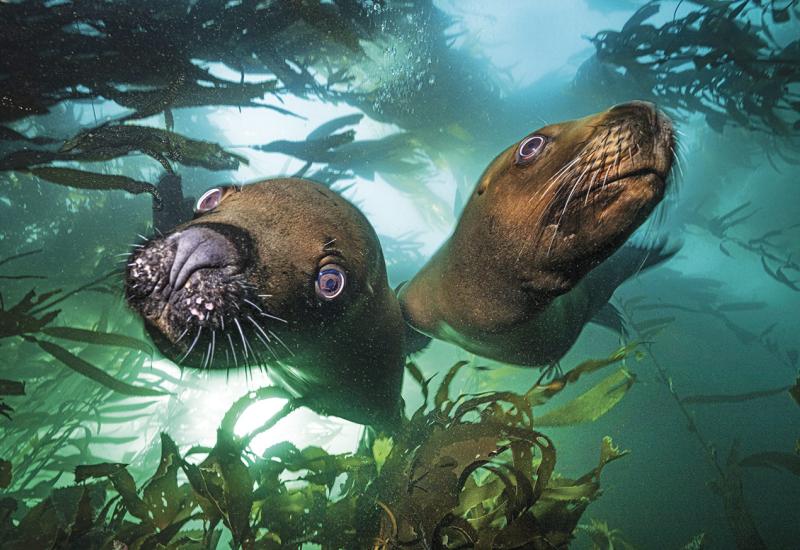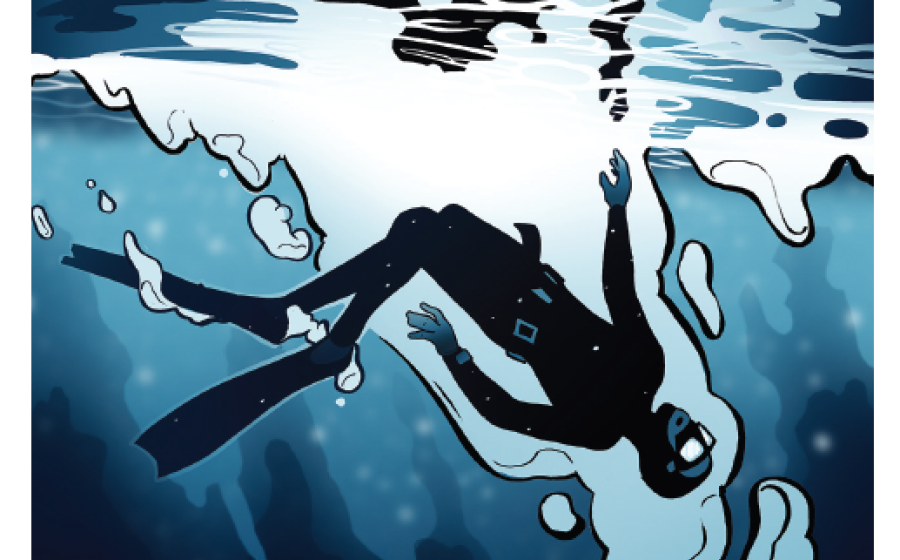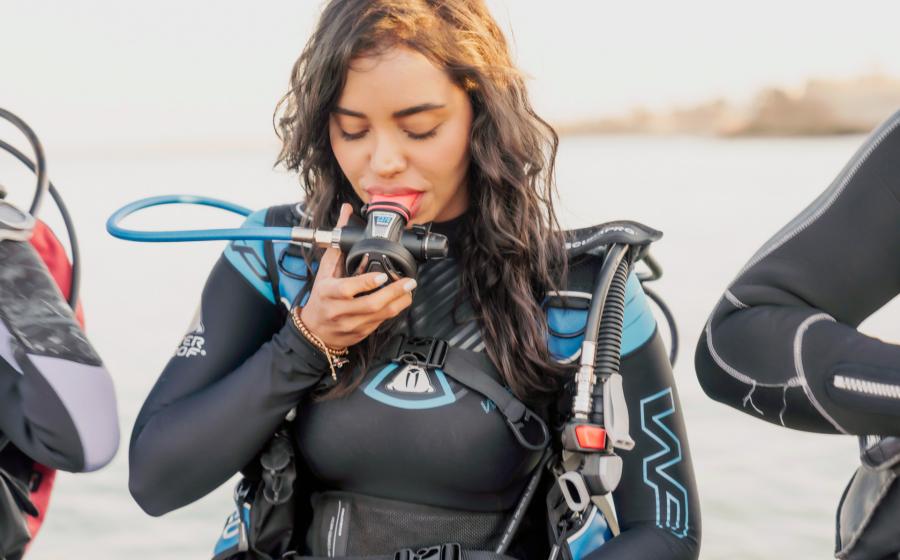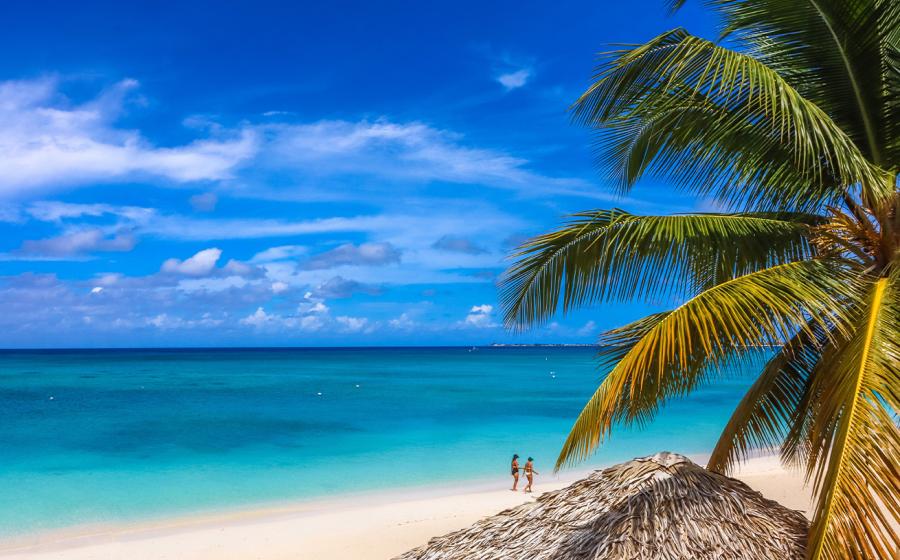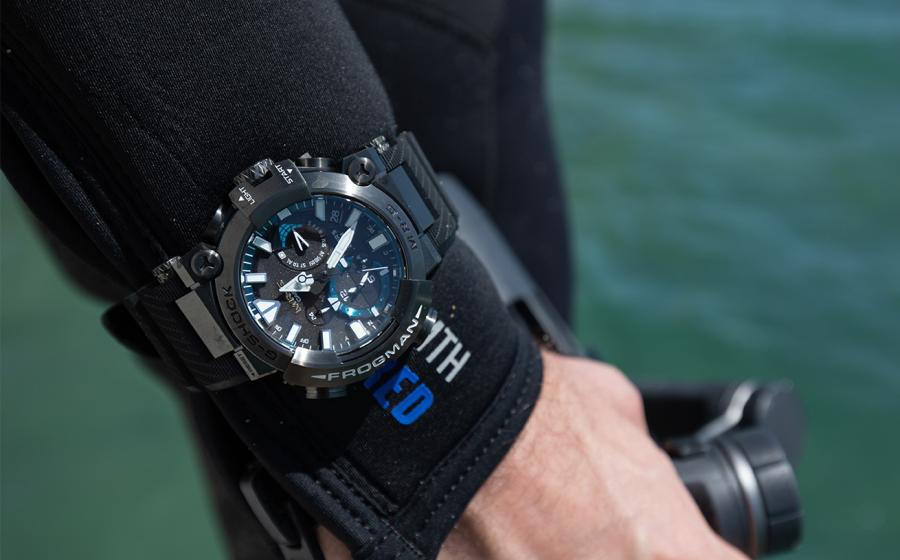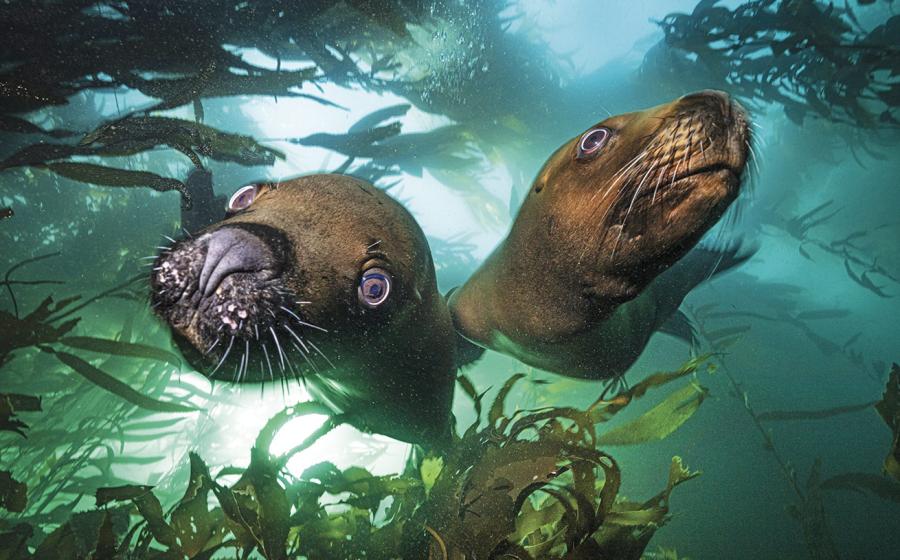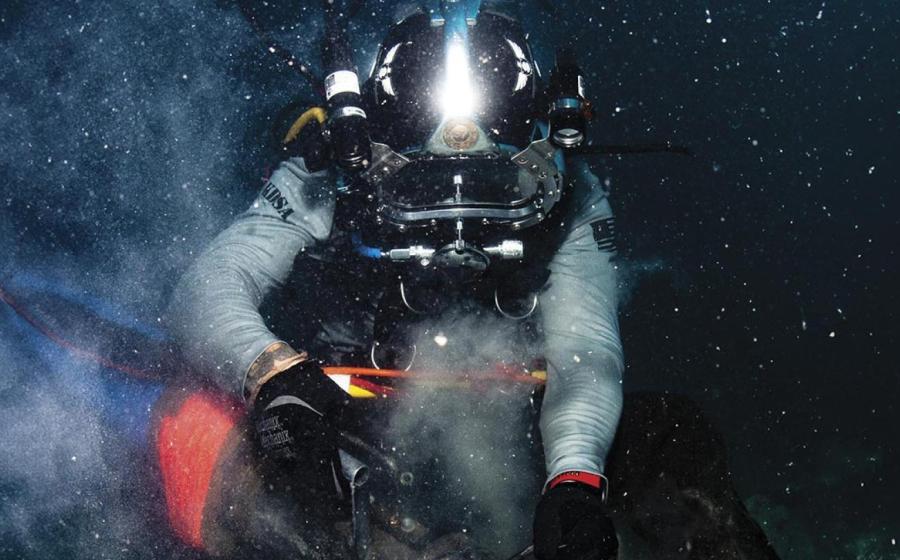How to Photograph Eels
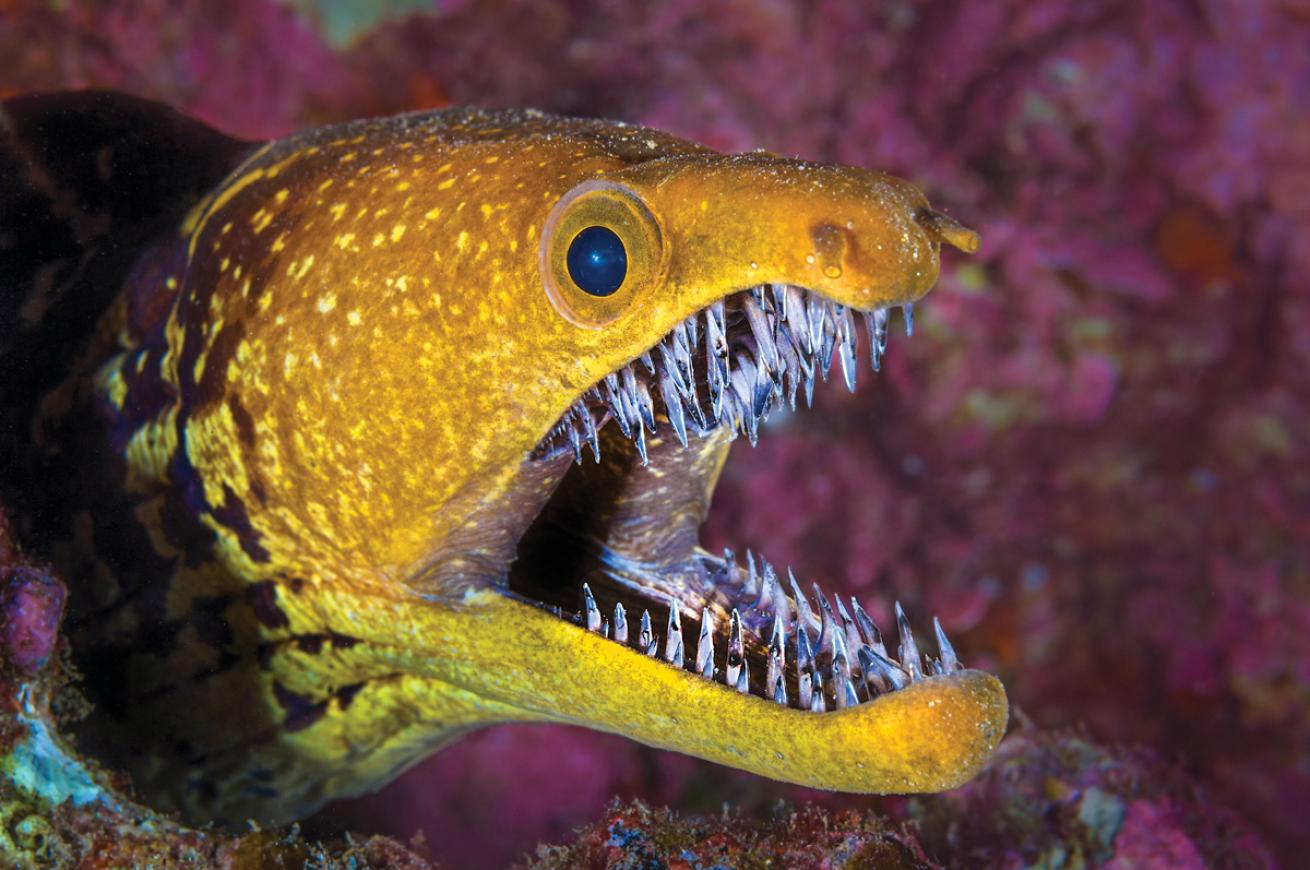
Alex MustardGear Nikon D2X with 60mm f/2.8 lens
Settings f/25; 1/50; ISO 100
Every diver can recognize an eel, but getting standout shots of such slithery subjects is not so straightforward. Being long and thin, eels don’t fill the frame of a picture, and because you generally find them sticking out of holes, they are always close to their surroundings, making it tough for them to stand out from the background.
Despite these challenges, eels usually stay put, allowing you to aim a snoot or maneuver the camera in for a wide-angle close-up. Morays are often social, with several individuals crowding in a hole together. Many species have attractive patterns, and moray eels have especially impressive teeth.
The most common solution to their awkward shape is concentrating your framing on their head. A head-on shot can be dramatic, but take care to focus by manually setting your autofocus (AF) point on one of its eyes. Otherwise, the AF will likely lock onto the tip of its snout, leaving the eyes out of focus.
It is rare to find an eel far from the seabed, so how you deal with the background is always one of the primary photographic decisions. You can open the aperture so the background falls out of focus or selectively light the eel. Inward lighting or a snooted strobe are ideal for picking out eels from their surroundings. That said, sometimes you don’t need such fiddly techniques and simply side-lighting an eel can be perfect.
Two other alternatives are to frame tightly so the eel body becomes the background, which works especially well with strongly patterned eels, or to use a wide lens very close to the eel, which pushes the background away. One place where it is great to show their surroundings is in wrecks, where eels are commonly seen because of all the gaps and crevices.
Related Reading: Introduction to Manual Underwater Photography
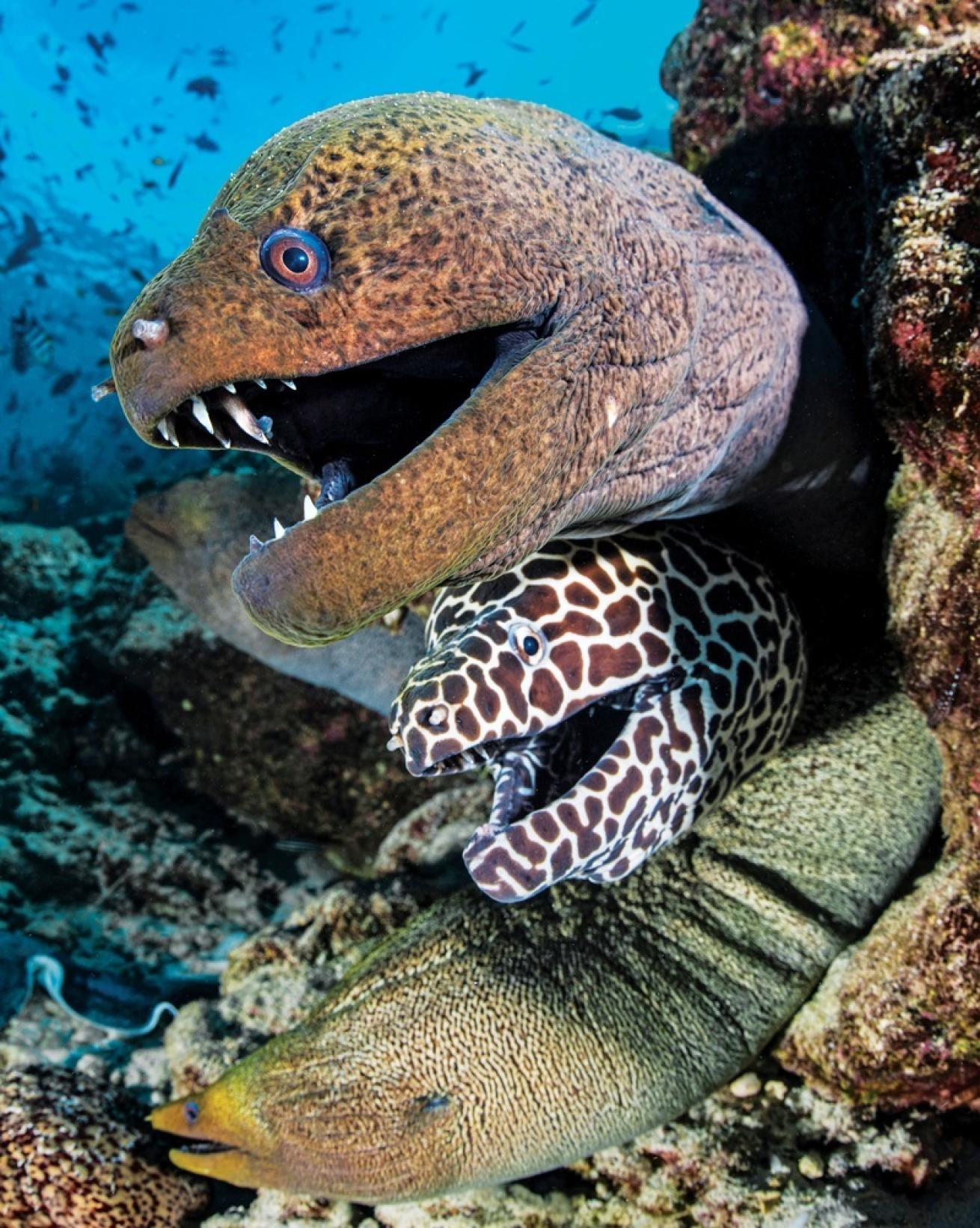
Alex MustardGear Nikon D5 with 13mm f/2.8 lens
Settings f/22; 1/320; ISO 400
Behind the Shot
1 Seek out species with prominent teeth, like this fangtooth moray in the Canary Islands, and then time your shot for a fully open mouth to show them off. Darker individuals are best because their pearly whites stand out more in their dark mouths. When possible, I will pull my strobes wider apart for these shots to rim-light the eel, throwing most of the mouth into shadow and making the teeth really jump out.
2 Eels are often found cohabiting, providing standout photo opportunities. Morays are both a wide-angle and macro subject, and when there is more than one they can work very well as a close-focus wide-angle shot. I always optimize my settings and lighting away from the eels and only then move my camera in, shooting as I slowly position it closer.
Related Reading: Mastering the Art of Cephalopod Photography
Where to See Them
The Red Sea is great for giant morays, the Fish Factory dive site in the Maldives has beautiful honeycomb morays, and Dauin in the Philippines and Tulamben in Bali offer easily approachable garden eels. But I see the most species of eels when muck diving. The island of Ambon, part of the Maluku Islands in eastern Indonesia, is a standout destination. The junk-filled dive sites are packed with eels.

